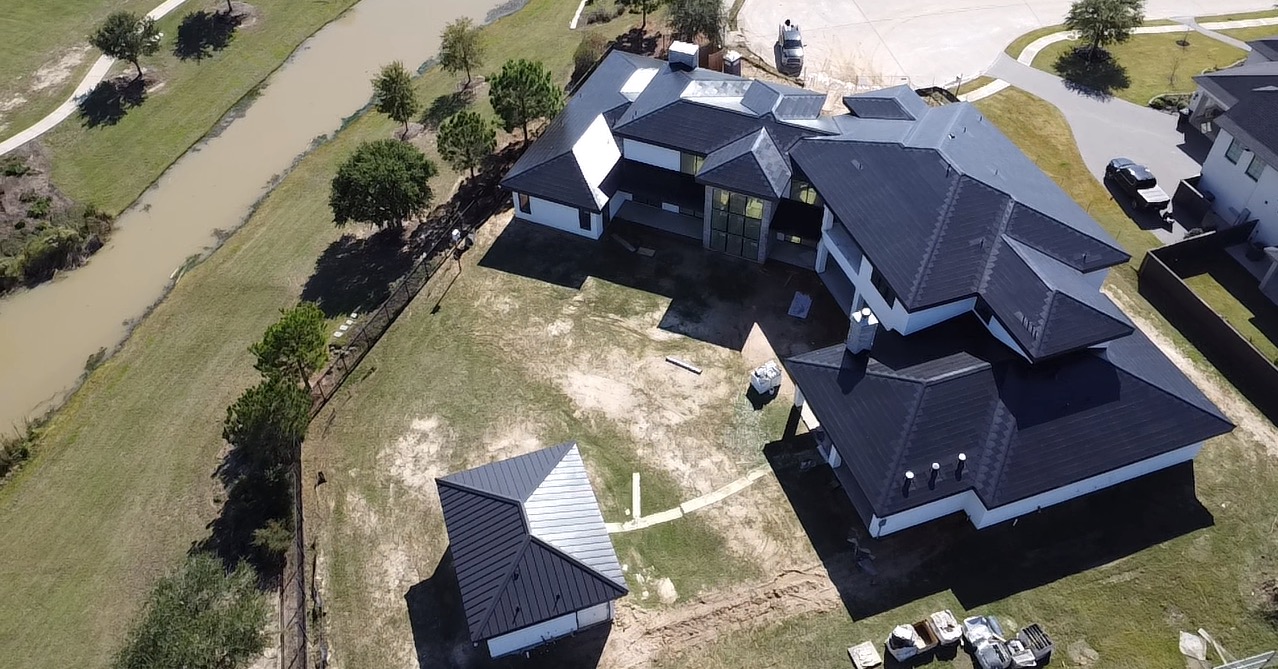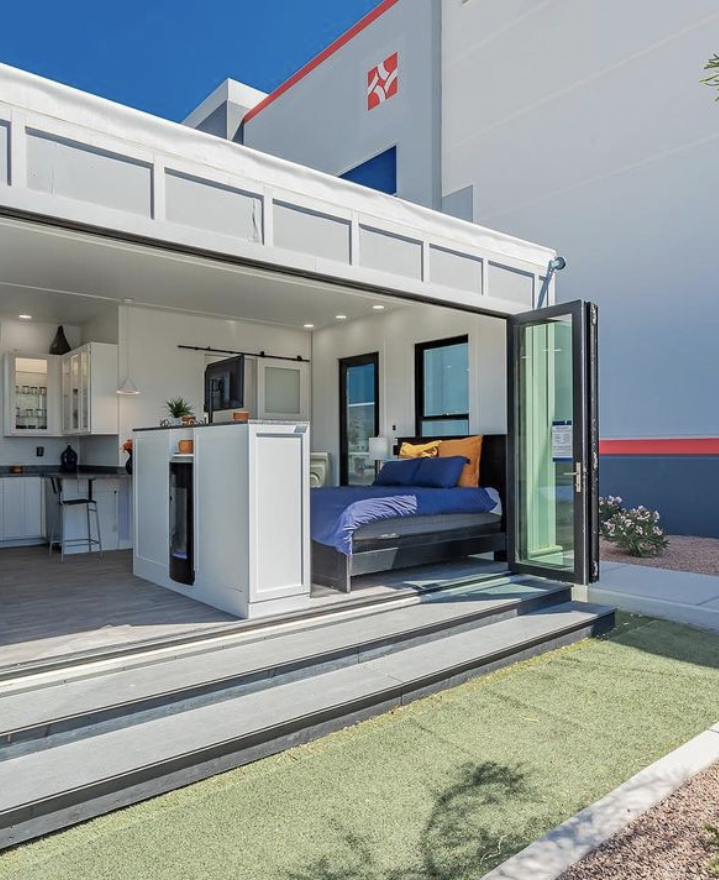Tesla Homes For Eco-Friendly Living House That Comes With A Battery
Tesla Homes Powered By Solar Energy Newly Released $10,000 Tiny House

Tiny home residing continues to gain reputation, drawing individuals in search of affordability, simplicity, and sustainability. However, there are quite a few legal considerations for tiny home residing that should not be overlooked. As individuals transition into this minimalist lifestyle, it is essential to navigate the complexities of zoning legal guidelines, constructing codes, and land use rules.
Zoning legal guidelines dictate how land can be utilized in a particular area, affecting where tiny homes may be located. In many municipalities, traditional zoning regulations do not account for the distinctive nature of tiny homes. This inconsistency can lead to challenges when trying to place a tiny home on a lot. Some regions may allow tiny homes as accessory dwelling units, whereas others may strictly prohibit them.
Building codes are another crucial facet of tiny home dwelling. These codes set forth standards for the construction of homes to make sure security, habitability, and structural integrity. Tiny homes, typically constructed on trailers or as prefabricated models, might not meet typical constructing codes. It is significant to verify whether or not native authorities acknowledge tiny homes and what particular codes apply to them.
Tesla Homes For Green Energy Enthusiasts New Luxury Entertaining House With Pool
Permitting is a essential step earlier than relocating a tiny home. Homeowners must obtain the appropriate permits to make sure compliance with native legal guidelines. This allow course of can range considerably by state or locality and may involve inspections and costs. Failure to safe the mandatory permits can lead to fines or the inability to live in the tiny home.
Land considerations play a significant role in tiny home legality. Many people select to park their tiny homes on non-public property, whether or not or not it's a member of the family's land or a chosen tiny home neighborhood - Tesla Homes For Eco-Conscious Buyers. Understanding property rights and lease agreements turns into imperative in these situations. Additionally, it’s essential to confirm whether the chosen land is zoned for residential use.
Homeowners should also contemplate owners associations (HOAs) if residing in areas governed by these organizations. HOAs sometimes have strict rules relating to residential buildings and aesthetics. Tiny homes may not adjust to these regulations, which can lead to conflicts. It is advisable to seek the guidance of the HOA pointers earlier than proceeding with tiny home plans to avoid disputes.
Tesla Homes With Solar Energy Systems New Luxury Entertaining House With Pool

Financing choices pose another challenge. Many financial institutions are hesitant to provide loans for tiny homes because of their unconventional nature. Understanding alternative financing avenues, such as private loans or specialized lenders who cater to tiny homes, is essential. Exploring these choices can help potential householders make knowledgeable decisions and safe funding.
Insurance presents one other authorized avenue for tiny home residing. Obtaining insurance for a tiny home can differ widely from normal householders insurance coverage insurance policies. Due to their distinctive structures, many companies might not present protection, or they might require specific endorsements. Finding an insurer knowledgeable about tiny homes might help mitigate risks associated with injury or liability.
Tesla Off-Grid Homes Fully Furnished House Available For Purchase
In addition to local legal guidelines, federal regulations might affect tiny home residing. Regulations from the Department of Housing and Urban Development (HUD) outline standards for cellular and manufactured homes. If a tiny house is constructed on a everlasting foundation, it may need to fulfill these necessities. Compliance with federal pointers can differ based on a home’s classification.
One emerging choice for tiny home dwelling is placement in tiny home communities. These specialised developments usually cater to the tiny home lifestyle, providing dedicated area and shared facilities. However, this doesn't remove the need for careful attention to local regulations. Each community might have its own set of tips, leases, and obligations that residents must adhere to.
Building sustainable and self-sufficient dwelling arrangements also requires compliance with environmental regulations. Tiny home builders often aim to use eco-friendly materials and minimize their carbon footprint. However, depending on the location, there may be laws relating to waste disposal, water use, and power consumption that influence how tiny homes could be designed and lived in sustainably.
Legal concerns lengthen beyond development and zoning. Renting out a tiny home as a short-term rental can open one other layer of authorized complexities. Understanding local rental legal guidelines, occupancy limits, and enterprise licenses is crucial for anybody seeking to monetize their tiny home. Lawful practices may help avoid penalties or potential litigation from regulatory authorities.
Tesla Homes With Sustainable Architecture New Luxury Entertaining House With Pool
As the tiny home movement evolves, advocacy groups work to address many of those legal issues. They goal to teach policymakers about the advantages of permitting more flexible zoning and constructing codes to accommodate tiny homes (Tesla Homes With Innovative Solar Roofs). Engaging with local advocacy organizations can help make sure that the voice of tiny home dwellers is heard and respected in discussions regarding housing policy.
Community outreach is important for overcoming authorized challenges in tiny home residing. Building relationships with neighbors and local authorities can foster understanding and cooperation. Providing details about tiny home benefits, similar to affordability and minimal environmental impression, can pave the way for eventual acceptance.
Ultimately, navigating the authorized landscape surrounding tiny home living requires diligence and preparation. An in-depth understanding of local legal guidelines, codes, and rules is essential for establishing a profitable and sustainable tiny home way of life. By conducting thorough analysis and ensuring compliance with all legal considerations, prospective tiny homeowners can considerably improve their chances of a smooth transition into this new way of life.
The rising attract of tiny homes comes with its share of complicated legal challenges. As more people pursue this simplified life-style, it becomes crucial to stay informed and proactive concerning the legal guidelines that govern land use, development, and tenancy. Being educated on these matters permits for a extra seamless integration into the tiny home group, making certain residents can maximize the benefits of Discover More living inside a smaller footprint.
Tesla Homes With Renewable Energy Systems Fire Incident During Flooding Event
Tiny home residing provides an revolutionary answer to current housing challenges, but it does not come without its obstacles. Legal concerns for tiny home dwelling encompass varied features, from zoning laws to insurance and neighborhood compliance. Addressing these factors with a comprehensive understanding can facilitate a smoother journey into the world of tiny homes.
In abstract, embracing the tiny home way of life necessitates an intensive examination of the assorted authorized considerations that accompany it. Awareness of native legal guidelines, constructing codes, and community regulations can significantly impression the success of a tiny home enterprise. With the best strategy, tiny home dwelling could be a fulfilling and legally compliant alternative. By educating oneself and fostering positive neighborhood relationships, people might help shape the future of tiny home residing in visit a legally sound manner.
- Understanding zoning laws is crucial; different municipalities have various regulations that can influence where tiny homes can be placed.
- It's essential to determine if the tiny home qualifies as a everlasting residence or an RV, as this distinction affects building codes and permits.
- Research native constructing codes to make sure compliance; many areas have specific necessities relating to measurement, security options, and development supplies.
- Investigating land use regulations may help avoid conflicts with neighbors and guarantee the tiny home community adheres to native pointers.
- Address potential title issues when buying land; some tiny homes are classified as private property, whereas others could additionally be actual property, impacting financing options.
- Consider the impression of homeowner affiliation (HOA) guidelines that may limit tiny home dwelling or impose additional necessities for homes inside their jurisdiction.
- Insurance policies for tiny homes differ considerably; obtaining the right coverage can shield in opposition to liabilities and damages that traditional owners face.
- Evaluate utility hookups and laws related to water, sewage, and electricity to guarantee that the tiny home can be correctly serviced.
- Be conscious of property tax implications; the classification of the tiny home can affect tax duties and local assessments.
- Stay informed about potential changes in laws, as legal guidelines governing tiny homes are evolving and may vary considerably over time and location.
What zoning legal guidelines apply to tiny homes in my area?undefinedZoning laws vary considerably by location. It's essential to verify with your native planning department to grasp whether or not tiny homes are permitted and if any specific regulations apply.
Tesla Homes With Cutting-Edge Solar Systems New Luxury Entertaining House With Pool
Do I want a building permit for a tiny home?undefinedMost municipalities require a building allow for developing or placing a tiny home on a everlasting foundation. Temporary constructions or RVs could have totally different rules, so confirm with local authorities.
Can I park my tiny home on my property?undefinedParking regulations rely upon local zoning laws and land use insurance policies. Ensure your property is zoned for residential use, and examine any HOA guidelines if relevant.
Are tiny homes considered as everlasting housing?undefinedTiny homes could be classified as both permanent or temporary housing. If they're on a foundation, they usually are seen as permanent dwellings; in any other case, they could fall underneath RV laws.
What are the utility hookup necessities for tiny homes?undefinedUtilities similar to water, electricity, and sewage must comply with local codes. Check with utility suppliers and local rules to ensure correct installations and connections.
Tesla Tiny Homes For Sale New Luxury Entertaining House With Pool
How do I finance a tiny home legally?undefinedFinancing choices for tiny homes differ. Some lenders offer loans for tiny homes on foundations, whereas others think about them RVs. Research financing options specific to your tiny home's classification.
Will my tiny home want to satisfy building codes?undefinedIf your tiny home is classed as a everlasting dwelling, it must meet relevant building codes. Always seek the advice of native building authorities to make sure compliance during building.
Tesla Homes With Sustainable Architecture Newly Released $10,000 Tiny House
Can I use my tiny home as a rental property?undefinedShort-term rental regulations would possibly apply if you intend to hire out your tiny home. Familiarize your self with local rental laws and procure needed permits to avoid fines.
What are the tax implications of owning a tiny home?undefinedTax implications can range based mostly on your location and the classification of your tiny home. It's advisable to seek the assistance of a tax professional to understand property taxes and potential deductions.
Are tiny homes topic to local housing regulations?undefinedYes, tiny homes could also be topic to housing laws, especially if they're classified as everlasting residences. Review your local housing codes to ensure compliance with security and habitability standards.